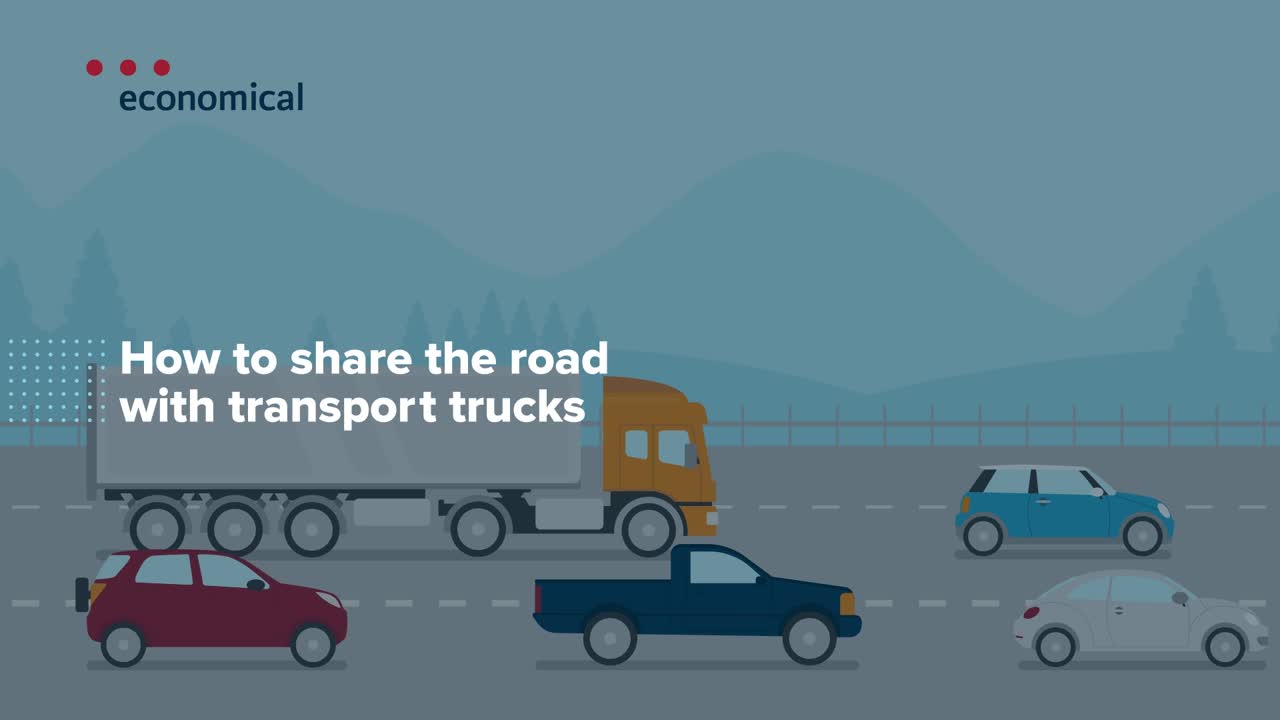How to safely share the road with transport trucks
Written by Stephanie Fereiro | Published on: May 3, 2018 | Updated on: September 8, 2021 | Categories: Car insurance
When a big truck gets a little too close for comfort, it’s easy to feel intimidated — especially on the highway. Keep these tips in mind to steer clear of collisions with trucks and stay safe on the road.

- Beware of blind spots. Not only are trucks bigger, heavier, and more powerful than private passenger vehicles, but they also have larger blind spots, making it harder for their drivers to see you coming. A truck’s blind spots can extend approximately 20 feet (or 6 metres) to the front, 30 feet (or 9 metres) to the back, one lane over on the driver’s side, and two lanes over on the passenger’s side. Generally speaking, if you can’t see the driver in their side mirror, they can’t see you either. Instead of hovering in a truck driver's blind spot, you should either slow down and keep your distance or pass the truck when it’s safe to do so.
- Pass trucks safely. Because of their size and weight, trucks take a lot longer to come to a stop than other vehicles on the road. The Ontario Ministry of Transportation recommends that transport trucks maintain a minimum following distance of at least 200 feet (or 60 metres) when driving at a speed of over 60 kilometres per hour in ideal weather — in rain or snow, a truck will need even more space to safely stop. Only pass a truck when there’s enough room for you to accelerate and create a little distance between your vehicle and the truck once you get in front of it.
- Make room for trucks to merge. Merge lanes can feel pretty short to drivers in big trucks, especially if there’s steady traffic in the next lane. If you’re on the highway and see a truck preparing to merge, safely change lanes or slow down a little to let them in so you don’t get stuck in the driver’s blind spot.
These are just a few of the things you can do to reduce your risk of getting into a collision with a truck. Even when there are no trucks around, you should always remember to drive at a safe speed, use your turn signals when changing lanes, avoid sudden lane changes and hard braking, and maintain a safe distance between your vehicle and the one in front of you to avoid rear-end collisions, which are the leading cause of car insurance claims.
Sometimes accidents happen. If it’s been a while since you’ve reviewed your car insurance policy, contact your group's licensed broker to make sure you have the coverage you need to protect you in case of a collision.
Want to help other drivers steer clear of collisions with trucks, too? Share these tips on Facebook or Twitter.